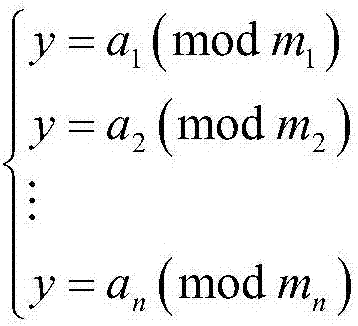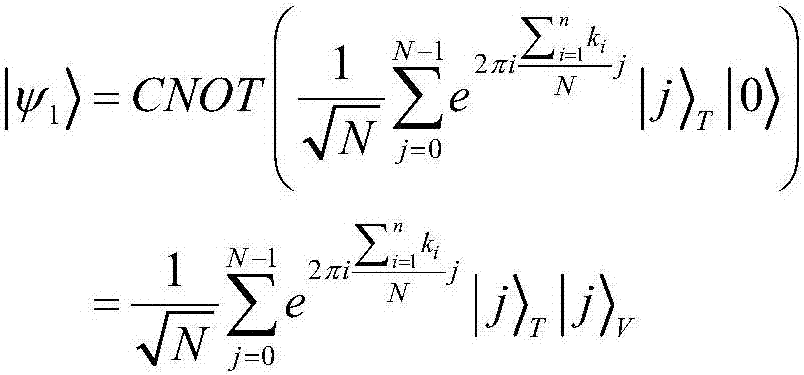Mobile quantum voting method based on Chinese remainder theorem
A Chinese remainder theorem, mobile technology, applied in the field of mobile voting, can solve problems such as high consumption of quantum resources, high complexity of quantum communication, and inability to resist malicious voter's secondary voting attack.
- Summary
- Abstract
- Description
- Claims
- Application Information
AI Technical Summary
Problems solved by technology
Method used
Image
Examples
Embodiment Construction
[0054] The technical solution of the present invention will be described in detail below, but the protection scope of the present invention is not limited to the embodiments.
[0055] In this embodiment, a mobile quantum voting method based on the Chinese Remainder Theorem is performed as follows:
[0056] Step 1: Generate system parameters:
[0057] Step 1.1: Supervisor Charlie uses the quantum key distribution QKD method to assign a key to each voter, and also assigns a key k to the teller Bob B , Which gives the i-th voter P i The assigned key is denoted as k i ;
[0058] Step 1.2: According to the Chinese remainder theorem, the supervisor Charlie prepares n pairwise prime integer sequences m 1 ,m 2 ,...,m i ,...,m n , Where m i Represents the i-th integer, let And make Is M i About mod m i The inverse of
[0059] According to the Chinese remainder theorem, for any integer a 1 ,a 2 ,...,a i ,...,a n , The following equation is established and has a unique solution:
[0060]
[006...
PUM
 Login to View More
Login to View More Abstract
Description
Claims
Application Information
 Login to View More
Login to View More - R&D
- Intellectual Property
- Life Sciences
- Materials
- Tech Scout
- Unparalleled Data Quality
- Higher Quality Content
- 60% Fewer Hallucinations
Browse by: Latest US Patents, China's latest patents, Technical Efficacy Thesaurus, Application Domain, Technology Topic, Popular Technical Reports.
© 2025 PatSnap. All rights reserved.Legal|Privacy policy|Modern Slavery Act Transparency Statement|Sitemap|About US| Contact US: help@patsnap.com



